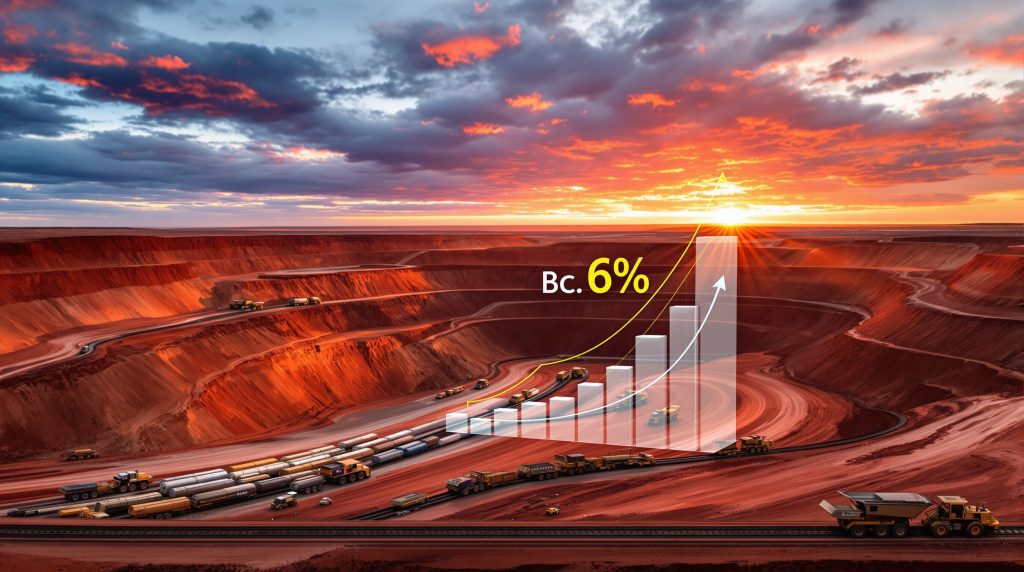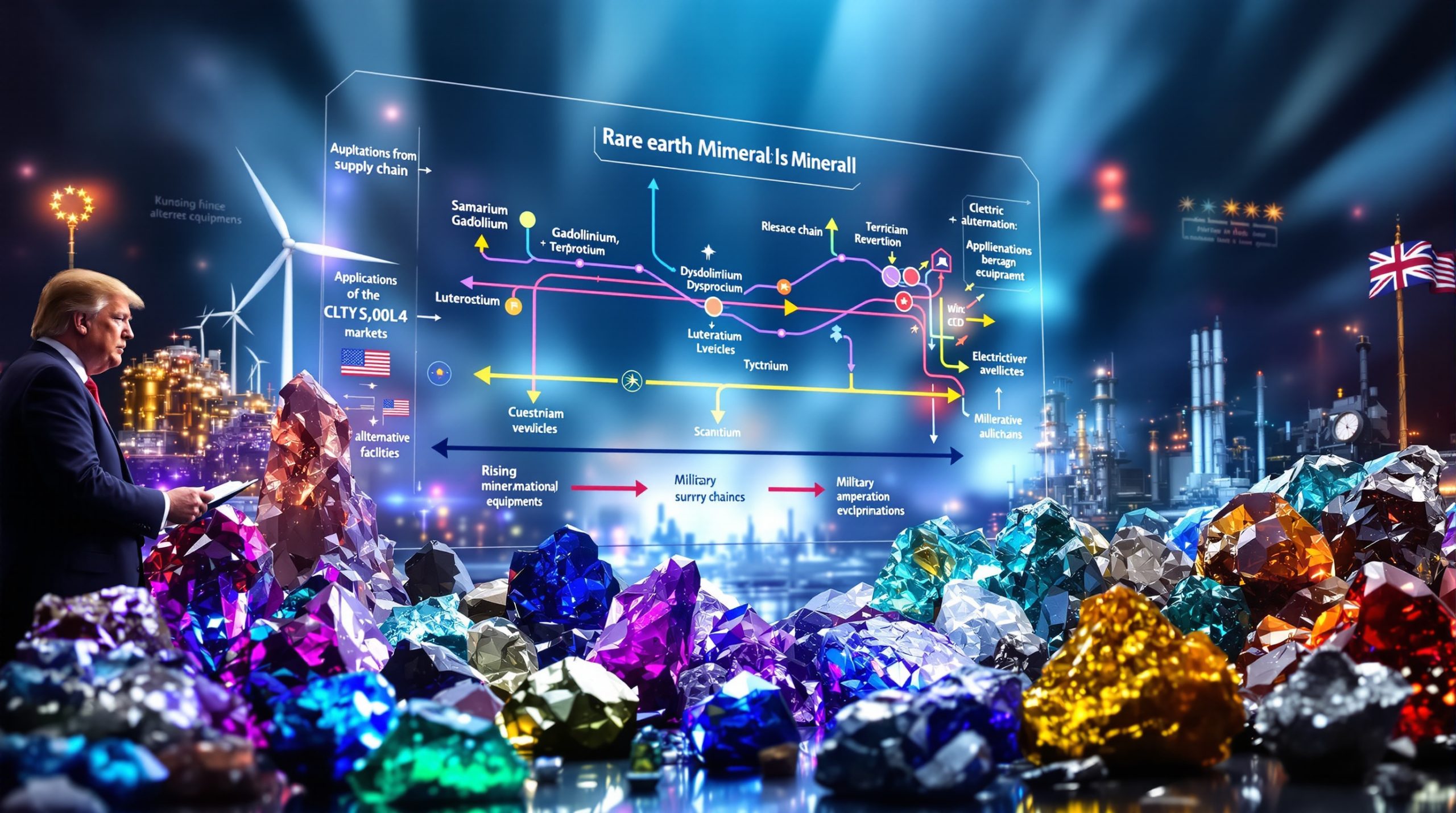How Did Rio Tinto Perform in Q3 2025 Iron Ore Shipments?
Rio Tinto demonstrated resilience in its third quarter of 2025, achieving a 6% sequential increase in iron ore shipments despite ongoing operational challenges. The mining giant shipped 84.3 million tonnes (Mt) from its Pilbara operations during the July-September period, up from 79.9 Mt in Q2. This performance reflects the company's ability to navigate through planned maintenance activities and infrastructure works, though it fell slightly short of analyst expectations of 85.5 Mt.
Key Q3 2025 Performance Metrics
-
Q3 Shipment Volume: 84.3 million tonnes
-
Sequential Growth: 6% increase from Q2
-
Analyst Expectations: Missed by approximately 1.2 Mt (1.4%)
-
Operational Context: Achieved growth despite planned major maintenance
What Factors Influenced Rio Tinto's Iron Ore Production in 2025?
Weather Disruptions and Their Impact
The first half of 2025 presented significant operational challenges for Rio Tinto's iron ore business, with four cyclones disrupting production schedules and transportation infrastructure in Western Australia's Pilbara region. These weather events had a cascading effect on operations, forcing the company to adjust its annual shipment forecast to the lower end of its guidance range (323-338 million tonnes).
Operational Adjustments and Recovery Strategy
Following the weather-related setbacks in early 2025, Rio Tinto implemented a strategic recovery plan that included:
-
Accelerated maintenance schedules during affected periods
-
Logistical reconfigurations to maximize rail capacity
-
Production mix adjustments to optimize output
-
Prioritization of high-margin ore bodies when possible
Ongoing Infrastructure Development
The third quarter saw continued infrastructure works that will extend into Q4, indicating Rio Tinto's commitment to long-term operational improvements despite short-term production impacts. These investments aim to enhance future resilience against weather disruptions and improve overall operational efficiency.
What Does Rio Tinto's Production Forecast Reveal About Market Strategy?
Annual Guidance and Market Positioning
Rio Tinto's decision to maintain its annual guidance at the lower end of the 323-338 million tonnes range reflects a conservative but realistic approach to market forecasting. This strategy acknowledges the impact of early-year disruptions while signaling confidence in the company's ability to maintain consistent production levels through the remainder of 2025.
Product Mix Considerations
The company has strategically adjusted its product mix throughout 2025, with a notable shift toward different ore grades based on market demand and operational constraints. This flexibility demonstrates Rio Tinto's ability to adapt to changing iron ore price trends while maximizing revenue potential.
Comparative Industry Performance
When compared to other major iron ore producers:
| Producer | Q3 2025 Shipments | Sequential Change | Annual Guidance |
|---|---|---|---|
| Rio Tinto | 84.3 Mt | +6% | 323-338 Mt |
| BHP | 72.4 Mt (est.) | +3.2% | 282-294 Mt |
| Fortescue | 48.6 Mt | +2.1% | 192-197 Mt |
| Vale | 89.2 Mt | +4.7% | 340-360 Mt |
How Is Rio Tinto Balancing Iron Ore and Copper Production Strategies?
Diversification Through Copper Growth
While iron ore remains Rio Tinto's primary revenue driver, the company is strategically expanding its copper portfolio. The strong ramp-up at the Oyu Tolgoi mine has positioned Rio Tinto to achieve copper production at the higher end of its guidance range for 2025, highlighting successful diversification efforts.
Strategic Importance of Dual Focus
The parallel focus on iron ore stability and copper growth represents Rio Tinto's response to:
-
Evolving global demand patterns for critical minerals
-
The strategic importance of copper in energy transition technologies
-
Risk mitigation through commodity diversification
-
Maximizing shareholder returns across multiple market cycles
Recent copper price prediction analysis suggests this strategy may yield significant benefits as the green energy transition accelerates.
What Are the Key Challenges and Opportunities for Rio Tinto's Iron Ore Business?
Operational Challenges
Rio Tinto continues to face several challenges in maintaining consistent iron ore production:
-
Seasonal weather disruptions in the Pilbara region
-
Aging infrastructure requiring ongoing maintenance
-
Logistical complexities of remote operations
-
Balancing production volume with product quality
Market Opportunities
Despite these challenges, several opportunities exist for Rio Tinto to strengthen its position:
-
Potential premium pricing for higher-grade, lower-emissions iron ore
-
Strategic positioning as a reliable supplier amid global supply chain uncertainties
-
Leveraging technological innovations to improve operational efficiency
-
Expansion of high-margin operations to enhance overall profitability
Simandou Project Development
The development of the Simandou iron ore project in Guinea represents a significant growth opportunity, with first shipments expected around November 2025. This project is anticipated to contribute 0.5-1.0 million tonnes to Rio Tinto's overall iron ore demand insights by year-end, establishing a foundation for future production growth.
How Does Rio Tinto's Performance Impact the Global Iron Ore Market?
Supply-Demand Dynamics
Rio Tinto's production levels significantly influence global iron ore supply-demand balances. The company's ability to maintain production despite operational challenges helps stabilize market supply, particularly important given fluctuating demand signals from China's steel industry.
Price Implications
The company's production performance has direct implications for iron ore pricing:
-
Consistent supply helps moderate price volatility
-
Product mix adjustments influence premium/discount spreads
-
Production forecasts impact market sentiment and futures pricing
According to a recent analysis by Reuters, these dynamics will continue to shape global commodity markets through 2025 and beyond.
Competitive Landscape Effects
As one of the world's largest iron ore producers, Rio Tinto's operational performance creates ripple effects throughout the competitive landscape, influencing:
-
Industry-wide production strategies
-
Investment decisions in new capacity
-
Shipping and logistics planning across the sector
What Are Analysts Saying About Rio Tinto's Iron Ore Business?
Market Sentiment Analysis
Market analysts have expressed mixed but generally positive views on Rio Tinto's iron ore performance:
-
Positive Perspectives: Resilience in overcoming weather disruptions; strong recovery trajectory; disciplined capital allocation
-
Concerns: Slight miss on Q3 expectations; continued infrastructure challenges; potential market oversupply
Investment Outlook
The investment community views Rio Tinto's iron ore business through several lenses:
-
Short-term considerations: Production consistency and cost control
-
Medium-term factors: Infrastructure improvements and operational efficiency
-
Long-term outlook: Resource sustainability and market positioning
As noted in the company's official quarterly report, Rio Tinto iron ore shipments increase reflects ongoing operational improvements despite challenges.
FAQ: Rio Tinto's Iron Ore Operations
How has Rio Tinto's iron ore production trended throughout 2025?
Rio Tinto's iron ore production has shown a recovery pattern throughout 2025, with Q1 affected by cyclone disruptions, followed by a 13% increase in Q2, and now a further 6% sequential growth in Q3, demonstrating progressive operational stabilization.
What percentage of Rio Tinto's revenue comes from iron ore?
Iron ore typically accounts for approximately 60-65% of Rio Tinto's overall revenue, highlighting the strategic importance of maintaining consistent production levels in this segment despite diversification efforts.
How does Rio Tinto's production cost compare to industry averages?
Rio Tinto maintains one of the industry's lowest production costs for iron ore, with average C1 costs in the lower quartile globally, providing competitive advantage and margin protection during price fluctuations.
What technological innovations is Rio Tinto implementing in its iron ore operations?
Rio Tinto continues to deploy advanced technologies including autonomous haulage systems, predictive maintenance platforms, and remote operations centers to enhance efficiency and reduce operational risks, all of which align with broader mining industry evolution trends.
Conclusion: Rio Tinto's Iron Ore Outlook
Rio Tinto's 6% sequential increase in Q3 iron ore shipments demonstrates operational resilience and recovery momentum despite ongoing challenges. The company's ability to navigate through planned maintenance activities while still growing production volumes highlights effective operational management.
Looking ahead, Rio Tinto faces the dual challenge of completing necessary infrastructure works in Q4 while maintaining production momentum. The company's conservative guidance approach, focusing on the lower end of its annual target range, reflects a pragmatic assessment of both operational realities and market conditions.
With copper production showing strong performance and the Simandou project approaching first shipments, Rio Tinto is effectively balancing current production optimization with strategic growth initiatives. This balanced approach positions the company to maintain its leadership position in the global iron ore market while advancing diversification goals through its global copper supply forecast.
Want to Invest in ASX Mining Stocks That Could Deliver Massive Returns?
Discover the power of real-time mineral discovery alerts with Discovery Alert's proprietary Discovery IQ model, helping investors identify high-potential ASX mining opportunities before the broader market. Visit our dedicated discoveries page to see how past mineral discoveries have created substantial shareholder value.




